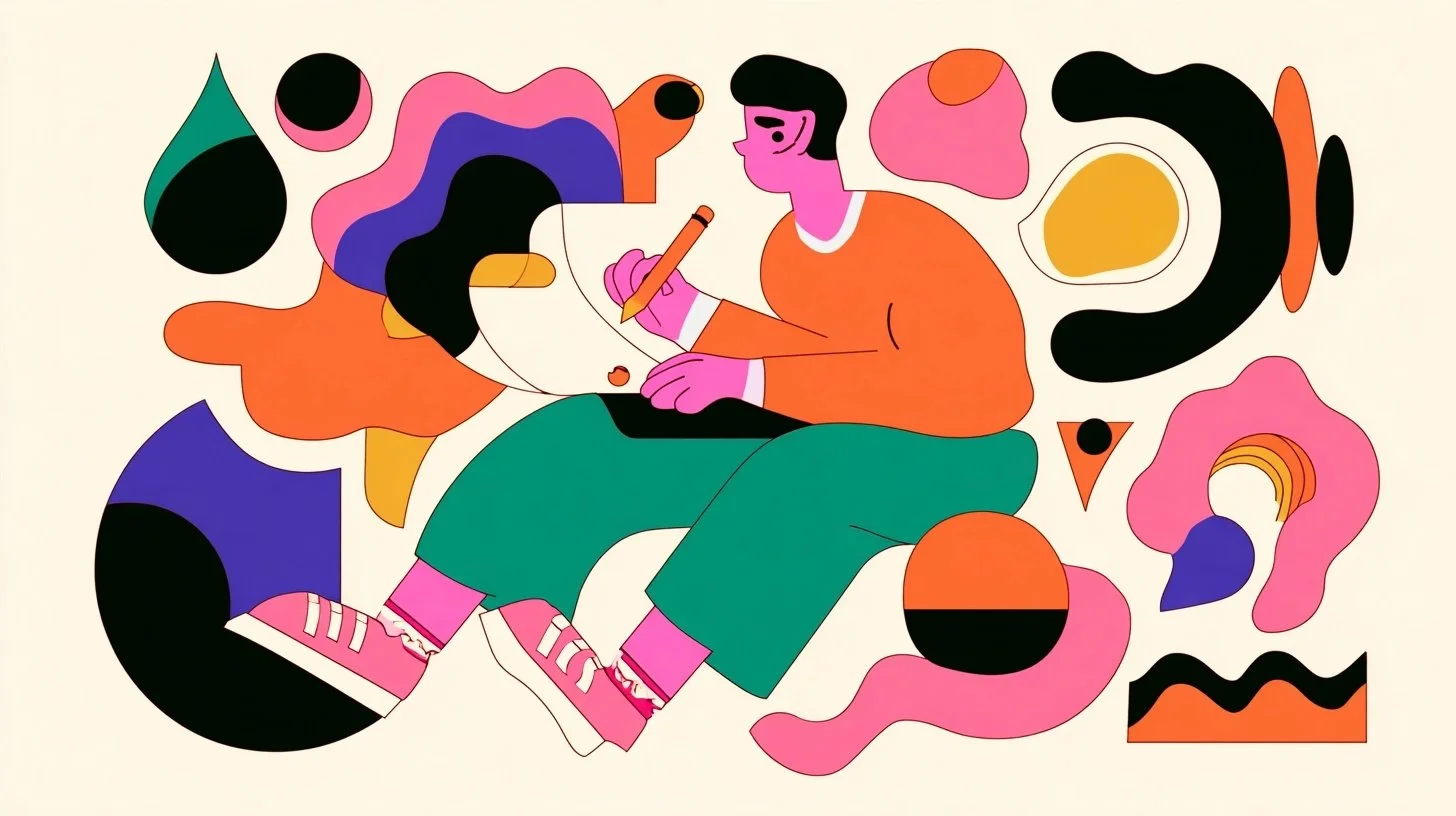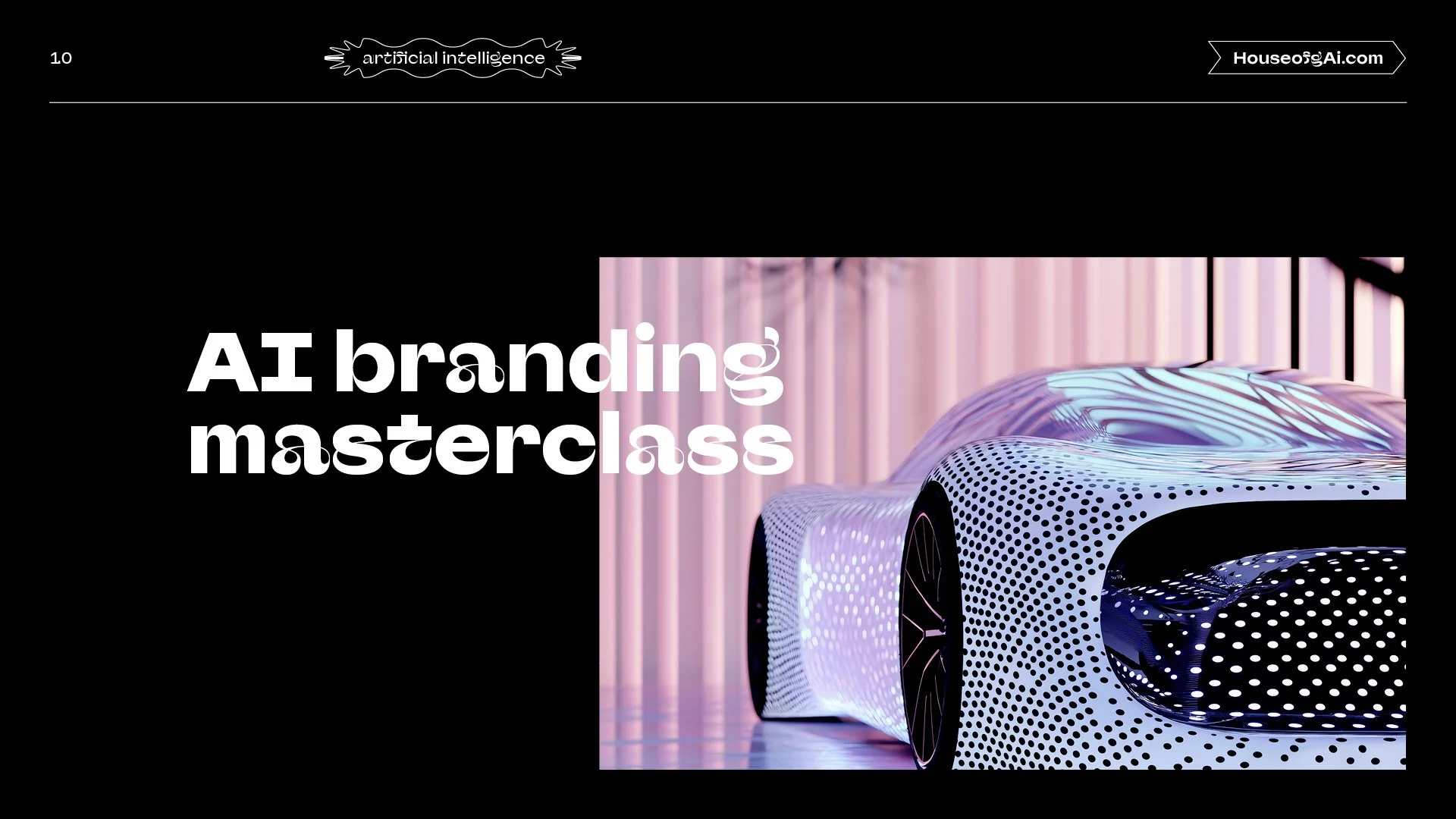THE AI TOOLS GRAPHIC DESIGNERS ARE ACTUALLY USING—AND WHAT THEY’RE GOOD FOR
Let’s be honest: most "Top 10 AI Tools for Designers" lists feel like clickbait written by someone who hasn’t touched a design file in years. This isn’t that.
This post is grounded in real data — specifically the 2025 State of AI in Design report, which surveyed over 400 designers. It’s also grounded in how we work at House of gAi: creative-first, not tech-first. Because while the tools are evolving fast, what matters most is how you use them — and why.
Spoiler: it’s not about doing more, faster. It’s about doing the early, messy parts of your creative process with more freedom and less friction.
First, a mindset shift: Tools don't replace creativity — they support it
The designers in the report who are actively using AI? Most of them are bringing it into the first 30% of their workflow: research, moodboarding, ideation, story-finding.
That’s important.
They're not handing over entire projects. They’re using AI to unlock direction, overcome the blank page, and push ideas further. The real magic happens when you combine your taste, strategy, and creative instinct with tools that help you move.
So we’ve broken this list down by what you’re trying to do — not just by brand name.
Need to generate ideas or brand stories? Try:
CHATGPT / GPT-4
Use it for early-stage thinking: brand archetypes, narrative prompts, naming explorations, metaphors.
Prompt idea: "Give me 5 brand story directions for a modern wellness brand inspired by lunar cycles and queer community."
It’s especially helpful for brainstorming creative copy, crafting strategic direction, and reframing design briefs in new ways.
PERPLEXITY
A great alt to search engines. Pull references, trends, or market research without the ad clutter.
Use it when you need: quick comparative research, tone of voice breakdowns, or insights on niche culture trends.
Designers can use Perplexity to speed up discovery phases — from scanning competitor brands to researching industry tone shifts.
Want visual inspiration or sketch-level moodboards? Try:
MIDJOURNEY
Still the go-to for experimental form-finding. Great for visual metaphors, texture, layout inspiration, or early-stage brand worlds.
Tip: Use reference images to guide style, and treat outputs like sketches, not finals.
Designers use it to unlock unexpected visual directions, generate quick explorations, and test abstract ideas before diving into production.
ADOBE FIREFLY
More structured and Adobe-integrated. Great if you want to stay inside your CC workflow. Less wild, more polish.
It’s perfect for removing backgrounds, generating consistent visual treatments, and applying type effects — especially when you need brand asset variations with tight alignment to client aesthetics.
PLAYGROUND AI
Lesser known but solid for remixing or trying alternate versions of concepts.
Designers can use Playground AI to test multiple visual treatments, apply cohesive filters, or even refine generated images into more refined styles for use in social campaigns or internal decks.
Want to streamline layout or thinking? Try:
FIGMA AI
Good for UX/UI designers or brand presentations. Autofill content, generate layout variants, or speed up iteration.
Use it for wireframe starters, content suggestions in mockups, or to build quick client-ready presentation frameworks.
NOTION AI
Best for moodboard captions, framework generation, or outlining creative proposals. Think like a project assistant.
It’s incredibly helpful for drafting strategy docs, summarising discovery calls, outlining campaign narratives, or generating structure for pitch decks — all from inside your existing creative documentation system.
Want to add motion or story? Try:
RUNWAY
Fantastic for early storyboarding, mood videos, or branded motion sketches.
Designers are using Runway to create expressive background visuals, experiment with short branded sequences, or generate mood-driven motion pieces for brand storytelling.
SORA
A newer tool from OpenAI for text-to-video generation. If you already have a paid OpenAI subscription, it’s a good place to start.
Sora is great for early ideation and visual storytelling — especially when you want to explore motion or environment concepts without investing a ton of time.
That said, the outputs can feel more limited or uncanny compared to Runway. We often test ideas in Sora first, then refine or rebuild in Runway for polish or tone.
Use Sora when you're feeling out visual rhythm or vibe — not for final exports, but for direction
What we teach in the AI Branding Masterclass
In the Masterclass, we go beyond the tools — we show you how to choose them, combine them, and use them strategically inside your workflow.
We don’t believe in “just add AI.” We believe in intentional, creative use. That’s what makes it your process — not the tool’s.
You’ll get practical exercises, brand briefs, and community feedback as you test tools like Midjourney, ChatGPT, Firefly, and Runway. You’ll learn how to audit your process and decide where AI can actually help — and where you need to take the lead.
Free resource: AI Tools x Creative Tasks Map
Want to try this out for yourself? Download our free worksheet to map your design tasks, current friction points, and AI tools you’re curious to test.
It’s a self-audit. A creative reflection. A reality check.
Download the AI tools x creative tasks map
AI isn’t a magic wand. But it is a set of tools you can use to amplify your thinking, speed up the boring bits, and get to the good ideas faster.
And that’s something worth learning how to use well.



